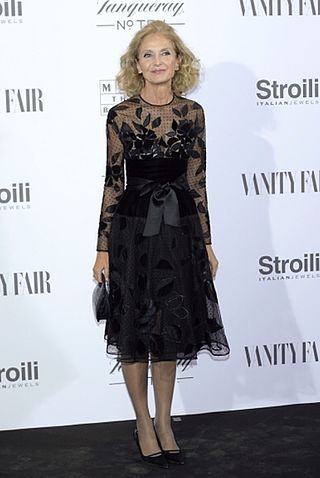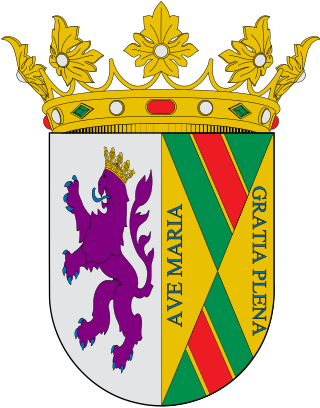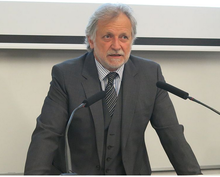
Spanish nobles are persons who possess a title of nobility confirmed by Spain's Ministry of Justice, as well as those individuals appointed to one of the three highest orders of knighthood of the kingdom, namely the Order of the Golden Fleece, the Order of Charles III and the Order of Isabella the Catholic. Some nobles possess various titles that may be inherited or not, but the creation and recognition of titles is legally the prerogative of the King of Spain.

Luisa Isabel Álvarez de Toledo y Maura, 21st Duchess of Medina Sidonia, GE was the holder of the Dukedom of Medina Sidonia in Spain. She was nicknamed La Duquesa Roja or The Red Duchess due to her lifelong left-wing, anti-Francoist, pro-democracy political activism.

The House of Medina Sidonia is a Spanish noble house originating from the crown of Castile, whose name comes from the Duke of Medina Sidonia, a hereditary noble title that John II of Castile granted to Juan Alonso Perez de Guzman, 3rd Count of Niebla, on February 17, 1445, as a reward for his services to the crown. The Dukedom of Medina Sidonia is the oldest hereditary dukedom in the kingdom of Spain.

Don José Álvarez de Toledo Osorio y Gonzaga, 11th Marquess of Villafranca, Grandee of Spain, jure uxorisDuke of Alba de Tormes, Grandee of Spain was a patron of the artist Francisco Goya.

María del Pilar González de Gregorio y Álvarez de Toledo, also known as Pilar Medina Sidonia, is a Spanish noblewoman, writer and socialite, who had been the former 15th Duchess of Fernandina between 1993 and 2012, until her title was revoked as a result of a legal battle with her nephew. Born in Madrid, she is the daughter of Leoncio González de Gregorio y Martí and his wife Luisa Isabel Álvarez de Toledo, 21st Duchess of Medina Sidonia. Her main seat of residence is at González de Gregorio Palace, in Quintana Redonda, Soria. Pilar is a writer, and is the author of many articles and a novel, titled Nápoles 23. Since 2011, Pilar has served as chairman of Christie's Spain.

Duke of Fernandina is a hereditary title in the peerage of Spain. It was granted by King Philip II to García Álvarez de Toledo y Osorio, Viceroy of Sicily and Catalonia, and later Marquis of Villafranca del Bierzo in inheritance from his elder brother. It was conferred on him the 24 December 1559, along with the principality of Montalbán. Fernandina is the only dukedom in Spain that is not attached to a Grandeeship. Its name makes reference to the town of Ferrandina in southern Italy.

José Joaquín Álvarez de Toledo y Silva, 18th Duke of Medina Sidonia, GE was a Spanish aristocrat and politician who served as Superior Chief of the Palace from 1885 until his death. He was a knight of the Real Maestranza de Caballería de Sevilla and of the Order of Alcántara.

Duke of Huéscar is a hereditary title in the Peerage of Spain, accompanied by the dignity of Grandee and granted in 1563 by Philip II to María Josefa Pimentel, daughter of the Dukes of Benavente, as a gift for her wedding to Fadrique Álvarez de Toledo, future Duke of Alba.

Carlos Fitz-James Stuart y Martínez de Irujo, 19th Duke of Alba, GE, is a Spanish aristocrat. He is the head of the House of Alba, one of the most prominent families of the Spanish nobility.
The Caballerizo mayor was the Officer of the Royal Household and Heritage of the Crown of Spain in charge of the trips, the mews and the hunt of the King of Spain.
The Mayordomo mayor was the Officer of the Royal Household and Heritage of the Crown of Spain in charge of the person and rooms of the King of Spain. The Office of “Mayordomo mayor” was suppressed after the proclamation of the Second Spanish Republic in 1931 and never re-created after the restoration of the Monarchy in 1975, but it can be said that it is the historical precedent of the modern Head of the Royal Household of Spain.

Marquis of Molina is a Castilian noble title that the Charles V, Holy Roman Emperor granted to the heirs to the Marquis of Los Vélez. The title was given to Luis Fajardo, 2nd Marquis of los Vélez. For centuries "Marquis de Molina" was the courtesy title of the apparent heir of the Marquis de los Vélez.

Marquess of Villanueva de Valdueza, commonly known as Marquess of Valdueza is a hereditary title in the Peerage of Spain granted in 1624 by Philip IV to Fadrique Álvarez de Toledo, an important General of the Spanish Navy who prevented the Dutch conquest of Colonial Brazil. He was son of the 5th Marquess of Villafranca, who was in turn a great-grandchild of Pedro Álvarez de Toledo, 1st viceroy of Naples.

Duke of Montalto was a hereditary title in the Peerage of Spain, accompanied by the dignity of Grandee and granted in 1507 by Ferdinand II to his nephew Fernando de Aragón y Guardato, who was an illegitimate son of Ferdinand I of Naples.
Alonso Álvarez de Toledo y Cabeza de Vaca, 11th Marquess of Valdueza was a Spanish peer and dog breeder. Known to have created his own breed of scent hounds which carry his name, "perro montero Valdueza", he was a recognised hunter and one of the founding fathers of the Junta de Homologación as well as a board member of the International Council for Game and Wildlife Conservation and member of the Shikar Club.

Marquess of Villabrágima is a hereditary title in the Peerage of Spain, granted in 1693 by Charles II to Baltasar Enríquez de Cabrera, knight of the Order of Santiago and grandson of the Duke of Medina de Rioseco.

Duke of Pastrana is a hereditary title in the Peerage of Spain, accompanied by the dignity of Grandee and granted in 1572 by Philip II to Ruy Gómez de Silva, 1st Prince of Éboli, 1st Duke of Estremera and one of the king's advisors.

Marquess of Astorga is a hereditary title in the Peerage of Spain, accompanied by the dignity of Grandee and granted in 1465 by Henry IV to Álvar Pérez Osorio, 2nd Count of Trastámara and captain general of Galicia and Asturias.

Duke of Medina de las Torres is a hereditary title in the Peerage of Spain, accompanied by the dignity of Grandee and granted in 1625 by Philip IV to Gaspar de Guzmán, 3rd Count of Olivares and royal favourite to the king. A few days later, the king granted him the Dukedom of Sanlúcar la Mayor.
















